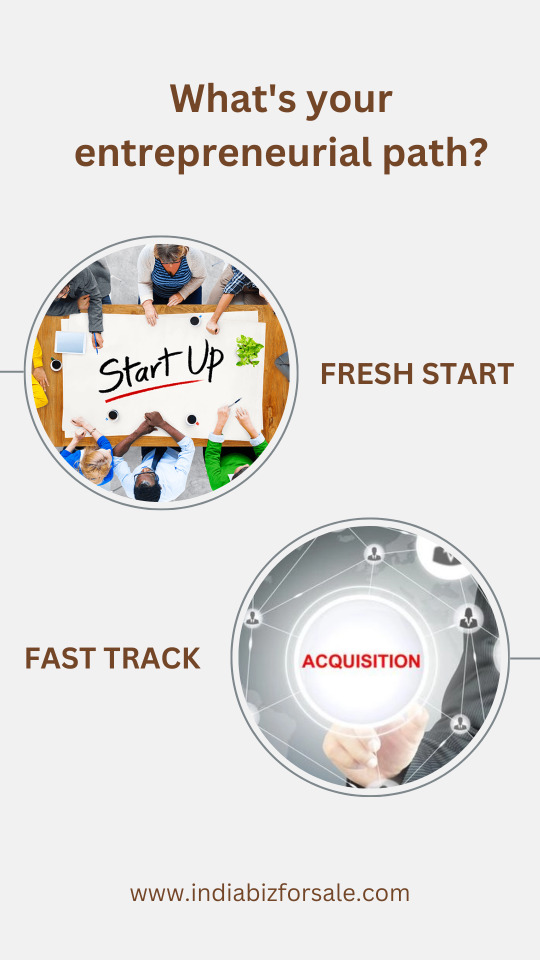#entrepeneurship
Text

You don't have to be great to start, but you have to start to be great. - Zig Ziglar
#financialfreedom#financialtips#finance#money#moneymaking#moneymindset#investingtips#investing#entrepeneurmindset#entrepeneurship#entrepreneur#sidehustle#hustlehard
18 notes
·
View notes
Photo

entremanure
There is a surprisingly large quantity of magic lamps in circulation.
#comicstrip#entrepeneurship#elonmusk#twitter#weirdjobs#cultleader#snake#creature#surreal#weirdo#workplace#sliceoflife
8 notes
·
View notes
Text
What Makes A Good Entrepreneur

Entrepreneurship is a challenging but rewarding journey. The path to success is paved with many obstacles, but the right mindset, skills, and traits can make all the difference. In this article, we will explore what makes a good entrepreneur, and how you can develop these qualities to achieve your goals.
Passion and Vision
Passion and vision are two of the most essential qualities that make a good entrepreneur. Without passion, it's hard to stay motivated and committed to your business over the long haul. And without a clear vision, it's difficult to know where you're going or how to get there.
Passion is what drives many entrepreneurs to start their businesses in the first place. It's that inner fire that inspires them to pursue their dreams, even in the face of uncertainty and risk. Passion fuels creativity, innovation, and resourcefulness, and it helps entrepreneurs to stay focused on their goals when challenges arise.
However, passion alone is not enough. To succeed in entrepreneurship, you need to have a clear and compelling vision for your business. Your vision is your roadmap for the future, outlining where you want to be and how you're going to get there. It provides direction, purpose, and motivation for you and your team.
To discover your passion and align it with your vision, you need to take the time to reflect on your values, interests, and strengths. What are you most passionate about? What motivates you? What are your core values? Once you have a better understanding of your passions and values, you can start to develop a vision for your business that aligns with them.
When developing your vision, it's important to think big but also be realistic. Your vision should be inspiring and ambitious, but it should also be achievable with the right resources and strategy. It's important to create a clear and specific vision statement that outlines what your business does, who it serves, and what impact it has on the world.
A clear and compelling vision can help attract customers, investors, and employees who share your values and beliefs. It can also help you stay focused on your goals and make better decisions that align with your overall vision.
2. Creativity and Innovation
Creativity and innovation are two important factors that drive entrepreneurship. In order to stand out in a crowded marketplace, entrepreneurs need to be able to think outside the box and come up with innovative solutions to problems.
Creativity is the ability to come up with new and original ideas, while innovation is the ability to turn those ideas into reality. Successful entrepreneurs are often creative problem-solvers who are able to find unique solutions to common problems.
There are several ways that entrepreneurs can cultivate their creativity and innovation skills:
Keep an open mind: To be creative, you need to be willing to consider new ideas and perspectives. Keep an open mind and be willing to experiment with different approaches.
Take risks: Innovation often involves taking risks and trying new things. Don't be afraid to take chances and try out new ideas, even if they seem unconventional.
Collaborate with others: Brainstorming and collaborating with others can help you generate new ideas and see things from different perspectives. Seek out opportunities to work with people who have different skills and backgrounds than your own.
Seek inspiration: Look for inspiration from a variety of sources, including other industries, art, nature, and culture. Pay attention to trends and emerging technologies that could be applied to your own business.
There are many successful entrepreneurs who have used creativity and innovation to disrupt their industries. For example:
Elon Musk, the founder of SpaceX, Tesla, and several other companies, has revolutionized the automotive and aerospace industries with his innovative technologies.
Sara Blakely, the founder of Spanx, used her creativity to develop a new type of shapewear that has since become a staple in many women's wardrobes.
Steve Jobs, the co-founder of Apple, was known for his ability to think outside the box and create innovative products that changed the world.
In conclusion, creativity and innovation are essential qualities for successful entrepreneurship. By cultivating these skills and staying open to new ideas, entrepreneurs can come up with innovative solutions that disrupt their industries and change the world.
3. Resilience and Adaptability
Resilience and adaptability are critical traits for entrepreneurs to have in order to survive the ups and downs of running a business. Entrepreneurship is a journey filled with obstacles and setbacks, and it's important to be able to bounce back from failure and adapt to changing circumstances.
Resilience is the ability to recover from setbacks and persevere through difficult times. It's the ability to maintain focus and motivation in the face of adversity. Adaptability, on the other hand, is the ability to adjust to changes in the environment or marketplace. It's the ability to be flexible and pivot when necessary.
To develop resilience and bounce back from failure, entrepreneurs need to:
Learn from mistakes: Failure is an inevitable part of entrepreneurship, but it's important to use it as a learning opportunity. Analyze what went wrong and what you can do differently in the future.
Stay positive: A positive mindset can help you stay motivated and focused during difficult times. Focus on the things that are going well and stay optimistic about the future.
Build a support system: Having a network of mentors, peers, and advisors can provide emotional support and valuable guidance during tough times.
Practice self-care: Taking care of your physical and mental health can help you build resilience and stay motivated. Make time for exercise, relaxation, and other activities that promote well-being.
To adapt to change and stay ahead of the competition, entrepreneurs need to:
Monitor the market: Keep an eye on industry trends, customer behavior, and emerging technologies that could impact your business. Stay informed about what your competitors are doing.
Be willing to pivot: Sometimes, a change in direction or strategy is necessary to stay relevant and competitive. Be willing to make bold moves and try new things.
Foster a culture of innovation: Encourage creativity and experimentation among your team members. Provide opportunities for learning and growth.
Focus on customer needs: Keep the customer at the center of everything you do. Listen to feedback, respond to concerns, and continuously improve your products and services.
In conclusion, resilience and adaptability are crucial for surviving the ups and downs of entrepreneurship. By developing these skills and strategies, entrepreneurs can bounce back from failure and stay ahead of the competition in a constantly evolving marketplace.
4. Risk-Taking and Decision Making
Entrepreneurship is all about taking risks, but it's not about taking reckless or blind risks. Successful entrepreneurs know that taking calculated risks is essential for achieving success. They weigh the potential rewards against the potential costs, and only take risks that have a reasonable chance of paying off.
Taking risks is essential for entrepreneurship because it allows entrepreneurs to seize opportunities that others may overlook. When entrepreneurs take risks, they open up new possibilities for growth and innovation. However, risk-taking alone is not enough. Entrepreneurs must also make informed and strategic decisions to navigate their businesses through uncertainties and challenges.
Decision-making is a critical skill for entrepreneurs, and it involves a combination of intuition, experience, and data analysis. Every day, entrepreneurs face a variety of decisions, from small operational decisions to larger strategic decisions that can have a significant impact on the business. Good decision-making requires entrepreneurs to gather as much information as possible and weigh the pros and cons of each option before making a choice.
To make confident and informed decisions that drive growth, entrepreneurs should follow these steps:
Define the problem: The first step in decision-making is to clearly define the problem or opportunity. This involves understanding the context, identifying the stakeholders involved, and framing the decision in a way that makes it clear what needs to be achieved.
Gather information: Once the problem is defined, entrepreneurs should gather as much information as possible. This includes market research, competitor analysis, financial data, and customer feedback. The more information entrepreneurs have, the better they can make informed decisions.
Analyze the information: After gathering information, entrepreneurs should analyze it carefully. This involves identifying patterns and trends, spotting opportunities and threats, and evaluating the potential impact of different scenarios.
Weigh the pros and cons: Once the information is analyzed, entrepreneurs should weigh the pros and cons of each option. They should consider the potential risks, rewards, and consequences of each choice.
Make a decision: Finally, entrepreneurs should make a decision based on their analysis and evaluation. They should choose the option that aligns with their goals and values, and that has the best chance of driving growth and success.
Examples of successful entrepreneurs who took calculated risks and made sound decisions include:
Jeff Bezos, who made the bold decision to pivot Amazon from an online bookstore to a global e-commerce giant, even though it meant risking the company's existing revenue streams.
Sarah Blakely, who took a risk by investing her life savings into starting Spanx, a new type of undergarment that became an instant success.
Jan Koum and Brian Acton, who took a risk by leaving their jobs at Yahoo! to start WhatsApp, a messaging app that eventually sold to Facebook for billions of dollars.
In conclusion, taking calculated risks and making informed decisions are essential for entrepreneurial success. Entrepreneurs who can balance risk-taking with strategic decision-making are more likely to achieve their goals and build successful businesses.
5. Leadership and Communication
Leadership and communication are two critical skills that entrepreneurs must master to build successful businesses. Effective leadership allows entrepreneurs to inspire and motivate their teams, while effective communication enables them to build relationships with customers, investors, and stakeholders.
Leadership skills are essential for entrepreneurs because they enable them to guide their teams towards a common goal. Entrepreneurs who lead with purpose and vision can inspire their teams to work towards a shared objective, fostering a culture of collaboration, innovation, and growth. Good leaders also have strong emotional intelligence, which allows them to understand and empathize with their team members' needs and motivations.
To develop your leadership style and inspire your team, entrepreneurs should focus on building the following skills:
Communication: Effective leaders are also strong communicators. They can clearly articulate their vision, goals, and expectations to their team members, and can provide feedback and guidance that helps them grow and develop.
Empathy: Good leaders also have empathy for their team members. They understand their strengths, weaknesses, and motivations and can tailor their leadership style to meet their needs.
Decision-making: Leaders must also be able to make confident and informed decisions. They must weigh the risks and rewards of different options and choose the best course of action for the business.
Effective communication is also essential for entrepreneurship. Entrepreneurs must be able to communicate their value proposition to potential customers, investors, and stakeholders. They must also be able to build relationships with these stakeholders to foster trust, credibility, and loyalty.
To build strong communication skills, entrepreneurs should focus on the following strategies:
Tailor your message: Entrepreneurs must tailor their messaging to different audiences. They must be able to articulate the value proposition of their business in a way that resonates with customers, investors, and stakeholders.
Listen actively: Effective communication also involves active listening. Entrepreneurs should listen to their customers, investors, and stakeholders to understand their needs, concerns, and feedback.
Be transparent: Good communication is also transparent. Entrepreneurs should be honest and transparent with their stakeholders, even when delivering difficult news.
Successful entrepreneurs who have demonstrated strong leadership and communication skills include:
Elon Musk, who has built several successful companies by inspiring his teams to work towards ambitious goals.
Oprah Winfrey, who has built a media empire by communicating her values and beliefs to her audience.
Mark Zuckerberg, who has built a successful social media platform by listening to his users and stakeholders and communicating transparently with them.
In conclusion, leadership and communication are essential skills for entrepreneurs. Entrepreneurs who can lead with purpose and vision and communicate effectively with their stakeholders are more likely to build successful businesses. By focusing on developing these skills, entrepreneurs can inspire their teams, build strong relationships with stakeholders, and achieve their goals.
6. Continuous Learning and Improvement
Continuous learning and improvement are crucial for entrepreneurs who want to stay ahead of the competition and build successful businesses. By continuously seeking out new knowledge and skills, entrepreneurs can adapt to changing market conditions, identify new opportunities, and improve their products and services.
The value of lifelong learning in entrepreneurship cannot be overstated. As industries and markets evolve, entrepreneurs must stay informed about the latest trends and best practices to remain competitive. This requires a commitment to ongoing learning and professional development, whether through reading industry publications, attending conferences and seminars, or taking online courses.
To stay informed about industry trends and best practices, entrepreneurs should focus on the following strategies:
Network: Entrepreneurs should actively network with other professionals in their industry to learn from their experiences and share knowledge and insights.
Attend industry events: Attending industry events such as conferences, trade shows, and seminars is an excellent way to stay up-to-date with the latest trends and best practices.
Read industry publications: Reading industry publications such as journals, magazines, and blogs is an excellent way to stay informed about the latest trends and best practices in your industry.
In addition to staying informed about industry trends and best practices, entrepreneurs should also focus on continuously improving their businesses. This requires a commitment to seeking feedback from customers, investors, and stakeholders and using that feedback to make improvements to products, services, and processes.
The benefits of seeking feedback and continuously improving your business include:
Improved customer satisfaction: By seeking feedback from customers and making improvements to products and services based on that feedback, entrepreneurs can improve customer satisfaction and build loyalty.
Increased efficiency: By continuously improving processes, entrepreneurs can streamline operations, reduce costs, and improve overall efficiency.
Competitive advantage: By staying ahead of the competition through ongoing learning and improvement, entrepreneurs can gain a competitive advantage in the market.
Successful entrepreneurs who have demonstrated a commitment to continuous learning and improvement include:
Jeff Bezos, who is known for his focus on customer feedback and continuous improvement at Amazon.
Elon Musk, who is constantly pushing the boundaries of technology and innovation with his companies such as Tesla and SpaceX.
Sara Blakely, who built a billion-dollar business by constantly iterating on her products and seeking feedback from customers.
In conclusion, continuous learning and improvement are critical for entrepreneurial success. By staying informed about industry trends and best practices, seeking feedback from customers and stakeholders, and making continuous improvements to products, services, and processes, entrepreneurs can build successful businesses that are adaptive, efficient, and competitive.
FAQs:
Q. Can anyone become an entrepreneur?
A. Yes, anyone can become an entrepreneur if they have the right mindset, skills, and traits. While some people may have a natural inclination towards entrepreneurship, others can cultivate these qualities through education and experience.
Q. What are some common mistakes that new entrepreneurs make?
A. Some common mistakes that new entrepreneurs make include underestimating the time and resources needed to start and grow a business, failing to do market research and identify their target audience, and neglecting to build a strong team and network.
Q. How important is networking in entrepreneurship?
A. Networking is crucial for entrepreneurship because it allows you to build relationships with potential customers, investors, mentors, and partners. By expanding your network, you can gain valuable insights and opportunities that can help grow your business.
Conclusion
Becoming a successful entrepreneur requires a combination of passion, vision, creativity, resilience, risk-taking, leadership, communication, and continuous learning. By cultivating these essential traits and skills, you can overcome challenges, seize opportunities, and achieve your goals. Remember, entrepreneurship is a journey, not a destination, so stay committed to your vision, adapt to change, and never stop learning and improving.
2 notes
·
View notes
Text
Fresh Start vs. Fast Track: Launching Your Business Dream
So you've got the entrepreneurial itch – congratulations! But now comes the big question: Fresh Start or Fast Track? There's no one-size-fits-all answer, but here's a breakdown to help you choose the path that aligns with your goals and resources.

Fresh Start: Building from Scratch
Pros:
Unlimited Potential: You're the architect! Craft a business that perfectly reflects your vision and fills a unique niche.
Perfect Fit: Pursue your passion and build something you're truly invested in for the long haul.
Lower Startup Costs: Often, fresh starts require less upfront investment compared to acquisitions.
Full Control: You call the shots! Make all the decisions and steer your business in the direction you choose.
Sense of Achievement: There's immense satisfaction in building something successful from the ground up.
Cons:
The Long Haul: Success takes time. Be prepared for years of dedication and hard work before reaping significant rewards.
Uncertain Path: There's no guaranteed formula. You'll need to navigate a sea of unknowns and be adaptable.
Wearing Multiple Hats: You'll likely be the marketing whiz, finance guru, and product champion – at least initially.
Financing Challenges: Securing funding for a new venture can be tough. Be prepared for creative solutions.
High Risk of Failure: Statistics are sobering – studies suggest a 90% failure rate for startups within the first few years.
Live Examples of Fresh Starts:
Zomato & Swiggy (India): These food delivery startups revolutionized the way Indians eat, starting from scratch and now dominating the online food ordering market.
Uber (Global): This ride-hailing giant began by disrupting the taxi industry and has since expanded into various mobility services.
Airbnb (Global): This hospitality pioneer challenged the traditional hotel industry by offering unique lodging options through a user-friendly platform.
Fast Track: Taking Over an Existing Business
Pros:
Established Clientele: Inherit a ready-made customer base, saving you valuable time and resources on acquiring new customers.
Proven Track Record: You're buying a business with a history of success, reducing some of the inherent risks of starting fresh.
Reduced Risk: There's less uncertainty with an established business model compared to a completely new venture.
Faster Growth: Leverage the existing infrastructure and customer base to potentially scale up more quickly.
Expertise Acquisition: Gain valuable insights and knowledge from the previous owner(s).
Cons:
Higher Upfront Cost: Acquisitions typically require a larger initial investment compared to starting fresh.
Hidden Liabilities: There could be unforeseen issues like debts or legal entanglements. Careful due diligence is crucial.
Integrating Existing Culture: Merging your vision with the existing company culture can be challenging.
Legacy Issues: The business may be burdened by outdated practices or technologies that require upgrades.
Limited Growth Potential: Established businesses may have a defined market size, potentially limiting your ability to achieve explosive growth.
Live Examples of Fast Track Acquisitions:
Salesforce acquires Slack (2021): This acquisition allowed Salesforce to expand its software solutions into the workplace communication arena.
Facebook acquires Instagram (2012): This strategic move bolstered Facebook's position in the social media landscape by capturing the photo-sharing market.
Microsoft acquires LinkedIn (2016): Microsoft leveraged LinkedIn's established professional network to strengthen its position in the business productivity software market.
Finding Acquisition Opportunities
If the Fast Track approach resonates with you, here are some resources to help you find acquisition opportunities in India:
Merger & Acquisition (M&A) advisory firms: These firms specialize in connecting buyers and sellers of businesses. They can help you identify suitable targets, value businesses, and navigate the acquisition process.
Online marketplaces: Platforms like IndiaBizForSale list businesses for sale by category, location, and industry.
Investment banks: Many investment banks have dedicated M&A teams that can source acquisition opportunities for their clients.
Industry associations: Industry associations often have resources or publications that list businesses for sale within their specific sector.
Choosing Your Path
The ideal path depends on your personal circumstances and goals. Consider the following:
Risk Tolerance: Are you comfortable with the rollercoaster ride of a startup, or do you prefer the relative stability of an established business?
Resources: Do you have the financial backing and industry expertise to launch your own venture, or would you benefit from the existing framework of an acquired business?
Entrepreneurial Drive: Do you crave the freedom to build something entirely new, or are you more focused on profitability and rapid growth?
There's no right or wrong answer. Weigh the pros and cons carefully, do your research, and choose the path that excites and empowers you to turn your business dream into reality!
Remember:
Fresh Start: Ideal for those with a unique vision, limited resources, and a high tolerance for risk.
Fast Track: A good option for those seeking faster growth, established clientele, and a proven business model, but with the understanding of potentially higher upfront costs and integration challenges.
Embrace the Journey!
No matter which path you choose, the entrepreneurial journey will be filled with challenges and rewards. Be prepared to adapt, learn, and persevere. With dedication and a well-defined plan, you can turn your business dream into a reality!
#businessadvice#startingfromscratch#businessacquisition#entrepeneurship#business tips#business owners#entrepreneurs#entrepreneur
0 notes
Text
Mastering Your To-Do List: A Guide to Prioritizing Tasks Like a Pro
In the fast-paced world we live in, managing tasks effectively is crucial for success. Whether you’re a busy professional, a student juggling multiple assignments, or a homemaker with a myriad of responsibilities, mastering the art of prioritizing tasks can significantly enhance your productivity and reduce stress levels. However, with so many tasks vying for our attention, it’s easy to feel…
View On WordPress
0 notes
Text
PRODUCT LAUNCHING AND MARKETING
Marketing is the dynamic engine that propels businesses towards their target audiences, involving crafting compelling messages and adapting strategies to understand and meet customer needs. At its core, it's a multifaceted business activity that establishes meaningful connections, builds brand recognition, and plays a crucial role in satisfying customer needs in a competitive market environment.
The 4Ps
Also known as the marketing mix, hold significant importance in guiding businesses to formulate a comprehensive and customer-centric marketing strategy.

Product. The product is at the core of the marketing mix as it addresses the customers' needs and desires. By focusing on features, quality, design, and packaging, businesses can create offerings that resonate with their target audience.
Place. Distribution channels play a pivotal role in making products accessible to customers. Determining where and how customers can access products ensures convenience, and understanding logistics and retail presence is vital for effective market reach.
Price. Pricing strategies directly influence customer perception and the financial health of the business. Considering production costs, competitor strategies, and market dynamics helps in establishing an optimal price that reflects the value of the product to the customer.
Promotion. Creating awareness and persuading customers to choose a product is achieved through promotional activities. Advertising, public relations, sales promotions, and other strategies collectively contribute to communicating the value of the product, fostering interest, and driving purchasing decisions.
The integration of these 4Ps provides a structured approach for businesses to align their products with customer needs, determine suitable pricing, choose effective distribution channels, and implement compelling promotional tactics. This customer-centric framework ensures that businesses address key elements that contribute to successful marketing and, ultimately, business success.
Know your customers
A customer is an individual or entity that engages in a financial transaction with a business, exchanging money for the goods or services offered by the business. This transaction is driven by the customer's desire to experience the value provided by the business.
Connecting Needs to Wants
The saying "Needs beget wants" emphasizes the importance of addressing fundamental human needs before desires. Startups succeed by identifying and fixing basic problems for customers, creating trust by reliably meeting essential needs. As customers' needs are fulfilled, desires for more aspirational goods or experiences naturally emerge, creating a cycle of customer satisfaction and loyalty.
The Greater The Fit, The Greater The Value
In business, the saying "The greater the fit, the greater the value" is a golden rule. It underscores the importance of aligning what a business offers with what customers truly need and want. Achieving a great fit leads to satisfied customers who find significant value in the product or service, resulting in brand loyalty and positive word-of-mouth.
Conclusion
In conclusion, navigating the marketing maze requires a holistic approach. Understanding customers and tailoring strategies using the 4 Ps—Product, Place, Price, and Promotion, as emphasized by Sir Carlo Calimon—is paramount. Ensure your product aligns with your target audience, spotlight its unique value, promote it judiciously, and commit to continual improvement for enduring success in the dynamic marketing landscape.
0 notes
Text
The Heartbeat of InkPrint VendoPro: Vision Crafting in Motion
Welcome to the latest chapter of our startup adventure!
Step into the vibrant pages of our team's entrepreneurial journey as we delve deeper into the exciting realm of our business startup, "InkPrint VendoPro."
This journal entry invites you to accompany us through the twists and turns of innovation, where convenience and technology intersect to revolutionize the current way in which we approach printing. Our journey began with the meticulous crafting of the Business Model Canvas with each element serving as a stroke on the canvas of our vision. We navigated through the intricacies of market segments, value propositions, revenue streams, and more, all the while shaping a comprehensive blueprint for our path ahead.
The heart of our narrative beats with the creation of our startup product promotion video—an immersive journey into the core of IVP or InkPrint VendoPro. We embraced the creative process from conceptualization to execution, which aims to convey the essence of our innovative vending printing machine that allows Bluetooth connectivity with the simplicity of bill/coin-operated transactions. And as avid learners, we seized the opportunity to enrich our entrepreneurial perceptions through a series of enlightening lecture sessions.




The virtual landscape came alive as our screens connected us with seasoned resource speakers via Zoom meeting and Facebook live last November 15, 2023. We will need a lot more pages just to enumerate all the things we learned from these amazing speakers, so allow us to present their names and topics that they shared:

Dr. Gamaliela A. Dumancas
∆ Intellectual Property Rights and Technology Transfer
We learned that understanding intellectual property and technology transfer is essential for individuals as it empowers them to protect their innovative ideas and creations, fostering a culture of innovation. This knowledge is not only crucial for safeguarding one's intellectual labor but also holds economic significance by enabling individuals to leverage and commercialize their innovations. Moreover, being well-versed in intellectual property rights ensures legal compliance, reducing the risk of unintentional infringement and potential legal consequences. In the context of technology transfer, this knowledge facilitates collaboration and the responsible exchange of knowledge and technology for mutual benefit. For entrepreneurs and businesses, it is instrumental in maintaining a competitive edge, attracting investors, and building a strong brand presence. Overall, a comprehensive understanding of intellectual property and technology transfer is indispensable in navigating the intricacies of the modern knowledge-driven economy and promoting ethical practices.

Ms. Alice Therese L. Caballeda
∆ Startup Ecosystem
One of the most important things we learn in a startup ecosystem is the function of invention, networking, and cooperation. Often covered subjects include industry trends, funding sources, mentorship, and the function of incubators and accelerators which offer specialized infrastructure, direction, and assistance to help businesses develop and prosper. Building a good team, being scalable, and familiar with regulatory issues are all essential for effectively navigating the difficulties of a startup ecosystem. It provides resources, networking, mentorship, and funding opportunities, it also encourages creativity, teamwork, and mutual learning, which makes an environment that is favorable for businesses to flourish.

Ms. Doreen Elsie Jane Gersava
∆ Start-Up Journey (VIRTUALAHAN- a visual eskwelahan for disabled persons founded by Mr. Ryan Gersava)
There are several stages in the startup process from ideation to growth. Important lessons we learned include the value of conducting market research, coming up with a workable business plan, getting money, assembling a solid team, responding to input from the market, and remaining resilient in the face of difficulties. We realized that rebuilding from setbacks, challenging ordeals, and tough situations is essential to a successful startup path. And that agility, impeccable decision-making skills, and ongoing learning are all necessary for surviving in the fast-paced world of business.
As we embark on our next journey—the startup promotional video and preparation for our final pitching—their wisdom and experiences became guiding lights, illuminating the path forward and inspiring us to elevate our startup endeavors. Join us on this exhilarating expedition, where every page turns and unfolds new insights, challenges, and triumphs. Together, let's venture into the uncharted territories of business innovation, embracing the spirit of collaboration, learning, and growth
Buckle up—our IVP startup saga is just beginning!
Insights:
As our entrepreneurial mind journey goes longer, it also signifies that we are nearing the end. The past weeks had been a roller coaster of emotions. First we were nervous towards our Business Model Canvas (BMC) pitching, then confused on what we should do for our start up video because not all of us are skilled in editing, and now lastly for our promotion video that needs to be planned carefully and make sure it does attract attention for it to be effective. These events had been a challenge but working as a team made it easier. We have been doing this since the beginning of the semester and I believe we will get through this till the end no matter how hard it may get as long as we are working together. Now that we are nearing the end, I realized that anything is possible as long as you work on it. We started this without any idea what to do, what path we should take, and what venture we should pursue. We were clueless and yet here we are. I am proud of what we have achieved so far and of course I am proud of us.
0 notes
Text
So, a few days ago in my group chat, a good friend of mine said while in high school he thought I was going to be a fashion designer. In high school, I was always staying on the new trends, selling clothes designed with fabric paint, and pushing the limits—not too far, of what was “fashionable”
As I thought about it, for the past few years I’ve been creating my own graphic art designs for all of my promotions for my other businesses. I could use this skill and apply what I’ve learned to graphic tees. I don’t think I am the greatest—yet, but I do believe as I continue creating, i will get better, make more original designs, and create opportunities for other potential artist.
One thing that will standout with the art and images that will be on our T-shirt, they will be from parts of Black culture that is rarely promoted in our fashion. From historical figures and events to popular artwork and phrases, it’s a celebration of Black culture.
When you wear #IAMTHEBRAND you represent who YOU are and what you love and that’s what THE BRAND is about.
Check us out @ www.iamthebrandco.com

#art#design#motivation#entrepeneurship#fashion#graphic tee#graphic art#hip hop#anime style#culture#black hippy#black nerd
0 notes
Text
kopiku dingin
Dari siang sampai menjelang sore tidak ada customer. Aku ngantuk karena habis membaca beberapa halaman Hitam 2045. Lalu memutuskan menyeduh kopi.
Customer datang. Aku segera berlari ke dapur dan bersiap.
Kembali ke meja ini sejam kemudian. Kopiku sudah dingin.
Dari pekerjaan seperti ini aku sangat banyak belajar. Belajar bersyukur meski hal- hal kecil seperti ini sering irritating.
Ya kopi 'kan tinggal bikin lagi. Hidup kok mau enaknya saja.
0 notes
Text
The Power of Riding the Wave: Embracing Trends and Opportunities in Business and Entrepreneurship
In the ever-evolving world of business and entrepreneurship, one key factor can significantly impact success: the ability to recognize and seize trends and opportunities. Join me as we delve into the importance of jumping on the wave of emerging trends and harnessing opportunities to drive innovation and growth.
Spotting the Trending Tides: In today's fast-paced world, trends come and go at a rapid pace. Staying attuned to market shifts, customer preferences, and emerging technologies is crucial. By actively monitoring industry trends, you can position yourself and your business to ride the wave of new opportunities.
Timing is Everything: Timing plays a critical role in business success. Recognizing the right moment to jump on a trend or capitalize on an opportunity can make all the difference. Being proactive, agile, and adaptable allows you to leverage the momentum of a trend and stay ahead of the competition.
Innovation through Trends: Embracing trends and staying ahead of the curve opens doors to innovation. By understanding customer needs and aligning your business with emerging trends, you can create unique solutions, products, or services that resonate with your target audience. Seizing opportunities for innovation can lead to increased market share and customer loyalty.
Embracing Entrepreneurial Agility: Entrepreneurs thrive on seizing opportunities and navigating the dynamic business landscape. Being open to new ideas, willing to take calculated risks, and adapting quickly to market shifts are key attributes of successful entrepreneurs. Embracing trends and opportunities is an integral part of the entrepreneurial mindset.
The Fear of Missing Out (FOMO) Effect: In a highly competitive business environment, the fear of missing out (FOMO) can be a powerful motivator. By staying informed, actively networking, and engaging with industry leaders, you can position yourself to seize timely opportunities and gain a competitive edge.
In the realm of business and entrepreneurship, the ability to recognize and embrace trends and opportunities is essential for sustainable growth and success. By staying attuned to market shifts, being open to innovation, and adopting an entrepreneurial mindset, you can position yourself as a leader in your industry. Remember, riding the wave of emerging trends and seizing opportunities can propel your business to new heights of achievement and influence.
1 note
·
View note
Text

Success is not the key to happiness. Happiness is the key to success. If you love what you are doing, you will be successful. - Albert Schweitzer
#financialtips#bussiness#financialfreedom#moneymindset#investing#entrepreneur#entrepeneurship#entrepeneurmindset#sidehustle
2 notes
·
View notes
Text
Expo Brazil 2023 - veja como foi o maior evento de empreendedores brasileiros nos Estados Unidos
Expo Brazil 2023: A maior feira de empresas brasileiras nos Estados Unidos!
A Expo Brazil 2023 está chegando e promete ser a maior feira de empresas brasileiras já realizada nos Estados Unidos. É um evento imperdível para quem deseja conhecer o que há de melhor na indústria brasileira e estabelecer parcerias de negócios promissoras.
Com uma variedade impressionante de expositores, a Expo Brazil…

View On WordPress
#Business#entrepeneurs#entrepeneurship#expobrazil#expobrazileuvou#expobrazilorlando#expoempreendedor#expoorlando#investor#orlando#tradeshow. tradeshowbooth
0 notes
Text
#fundaising#business#startups#entrepeneurship#mergersandacquisitions#active investors#business investors#new investors#startup investors#company investors
0 notes
Text
“My Journey towards Business world”
Truly indeed that everything is unexpected and there is always success in perseverance and hard work.
I’ve really learned a lot from the resource speaker most especially about succeeding in the entrepreneurial world. I can really relate to what the speakers are talking about because I’ve been in a family who owns a small business, and I was there since child, seeing the flow of our business, I have been also part of the operations just like repairing gadgets and more. I learned that in business the very goal of it is to gain profit, business was built because people want to earn money.
Our family started by selling rice and other home needs from our grandma, I saw both of my parents persevere every day they worked just to sustain our needs as a child and at the same time as a student. Time passed by we slowly have our own business until my father decided to open a cellphone repair shop, that was made into action and it was the store that help us siblings go to school, let my mother finish another degree, and as well as my older sister. Now, our store is still present and not big still small but can really provide our needs.
My mind about business was developed when I started to work in a certain coffee shop where I learned a lot, just like for example is costing of products, how much is the profit, and if really the store could really take a profit with deductions of the expenses.
This time my mind was again enlightened, we should not stop until we reach the so-called success, and this time I feel like I am competent enough to manage a business.
0 notes
Text
Business and Growing as a Freelancer
Throughout my time as a professional artist and designer, I have gone through many changes. At first, I was making full drawings for very cheap prices, something like $4 per drawing. Which of course meant that I had a lot of work but at the same time it was probably the time when I liked my job the least. Even though I was proud of how many clients I was getting, the money just wasn’t enough, and…

View On WordPress
0 notes